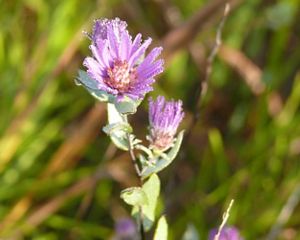Description
The preserve is part of the Anoka Sandplain, which was formed about 16,000 years ago by glacial meltwater. Approximately 1,000 to 1,500 years after the glaciers retreated, a community of conifers (mostly spruce) covered much of the land.
With a warmer climate, birch replaced spruce, and later oak supplanted birch. Helen Allison is an excellent example of oak savanna. Today, less than 65,000 acres of oak savanna remain in the Midwest—two-tenths of one percent of the pre-settlement savanna.
Location
Anoka County, 20 miles north of Minneapolis/St. Paul
Why TNC selected this site
The major reason for acquiring the preserve was to protect the dwindling acreage of oak savanna. The Helen Allison Savanna Preserve is adjacent to the southern-most portion of the 5,460-acre Cedar Creek Natural History Area, which is managed by the University of Minnesota. Collaborative research has been conducted frequently by The Nature Conservancy, the Department of Natural Resources and the University of Minnesota.
What TNC has done/is doing
In 1960, The Nature Conservancy acquired the land, thanks to a substantial donation by Helen Allison Irvine. She was known as Minnesota's "Grass Lady," and she wrote The Key to Grasses of Minnesota, a reference work on 180 species of grasses found in the state. Starting in 1962, about a third of the savanna has been burned each year on a rotating basis. University of Minnesota Botanist Dr. Donald Lawrence initiated the recovery of the old field area by hand seeding prairie species in the 1960s and 1970s. In 1979, the preserve was designated a Scientific and Natural Area by the State of Minnesota, following a thorough inventory of species.



